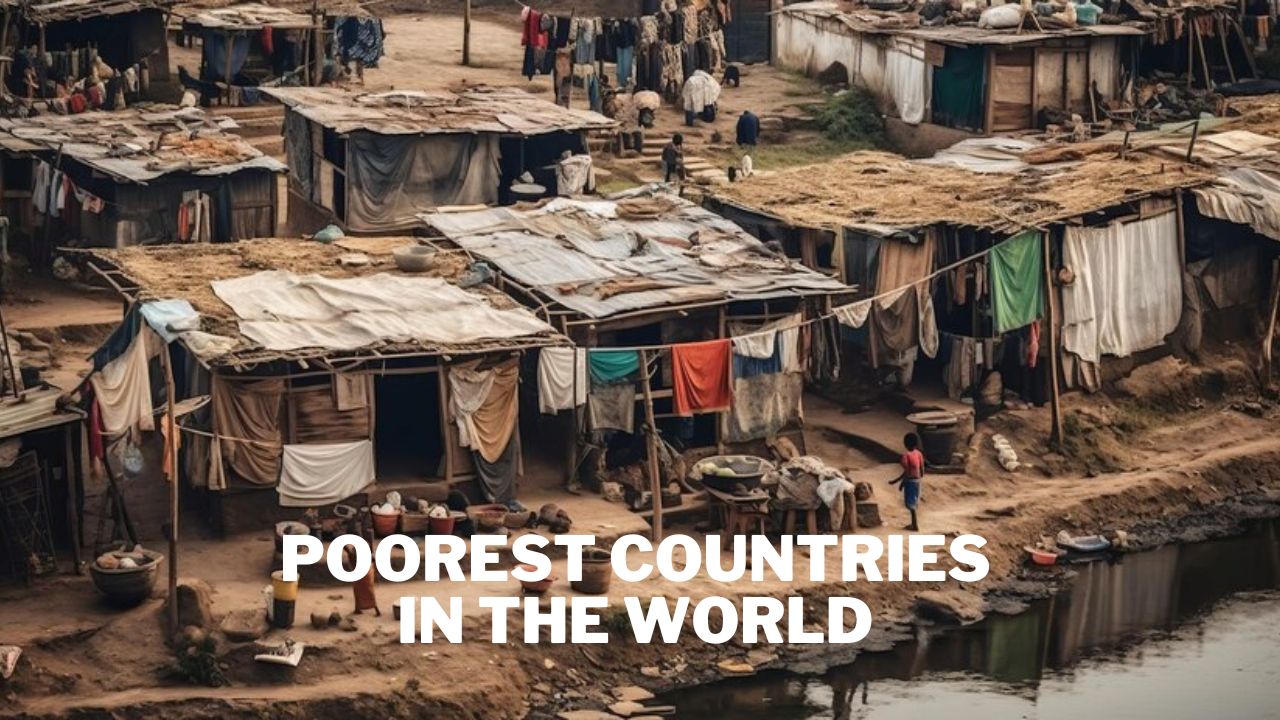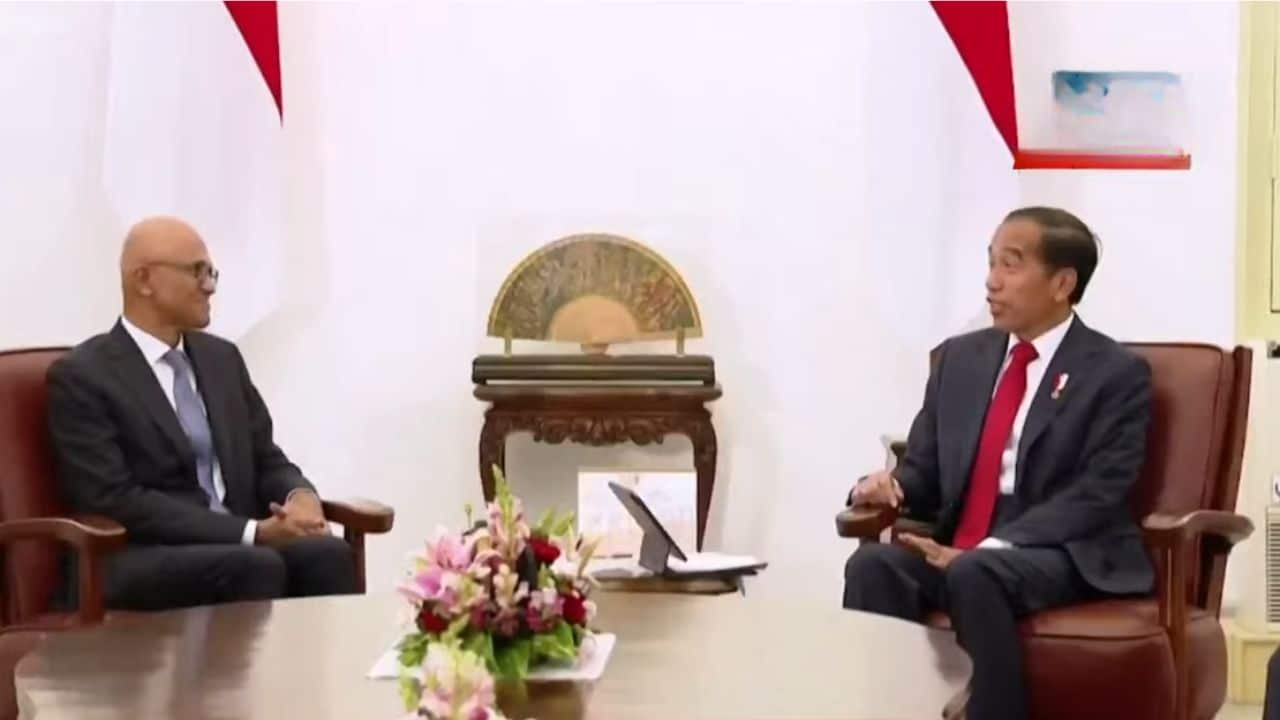Many of the world’s poorest countries have well-developed agricultural infrastructure, but they frequently lack the various industries present in more economically developed countries. These less fortunate countries rely heavily on technology, raw resources, goods, and services imported from both developed and emerging countries.
Some resource-rich countries, particularly those with considerable oil and energy reserves, have successfully transitioned from poor to developed status over the last seven decades.
Burundi has the lowest GDP per capita of $308, Sierra Leone has $472, and Malawi has $483 as of 2023. It’s worth mentioning that the bulk of the world’s poorest countries are in Africa, with exceptions in Asia including Yemen, Tajikistan, Myanmar, Nepal, Cambodia, the Kyrgyz Republic, and Laos, as well as Haiti in the Caribbean. Furthermore, countries such as Afghanistan, Lebanon, Sri Lanka, and Pakistan stand out as exceptional occurrences due to causes such as conflict or economic mismanagement.
Africa’s economy is currently on the rise, thanks to more investment and a greater emphasis on industrialization. However, it is vital to highlight that many African countries rely heavily on China for a wide range of goods, including electronics, apparel, food, kitchenware, and home items. Chinese products dominate the shelves of supermarkets across the continent. This excessive reliance on imports can be traced in part to many African countries’ weak manufacturing capacity as a result of a lack of government commitment to industrial development.
Nonetheless, several African countries have actively welcomed foreign direct investment and embraced industrialization as a method of advancement. With a major part of the world’s population and a lively demographic of young people, many of whom are under the age of 20, Africa as a whole has enormous potential. This young population represents an opportunity for growth and development that, if properly utilized, has the potential to catapult Africa to new heights.
The Following Are the World’s Poorest Countries as of 2023:
|
Rank |
Country |
Per Capita 2020 |
Per Capita 2021 |
Per Capita 2022 |
Per Capita 2023 ($) |
|
1 |
Burundi |
260 |
274 |
293 |
308 |
|
2 |
Sierra Leone |
509 |
509 |
494 |
472 |
|
3 |
Malawi |
568 |
559 |
523 |
483 |
|
4 |
Central African Republic |
495 |
525 |
496 |
515 |
|
5 |
Madagascar |
478 |
507 |
522 |
540 |
|
6 |
Somalia |
466 |
502 |
539 |
561 |
|
7 |
South Sudan |
487 |
364 |
328 |
569 |
|
8 |
Niger |
568 |
595 |
561 |
574 |
|
9 |
Mozambique |
454 |
492 |
542 |
579 |
|
10 |
Eritrea |
596 |
611 |
647 |
699 |
|
11 |
Democratic Republic of the Congo |
536 |
603 |
660 |
704 |
|
12 |
Chad |
653 |
697 |
743 |
755 |
|
13 |
Liberia |
600 |
677 |
735 |
769 |
|
14 |
Burkina Faso |
831 |
887 |
825 |
831 |
|
15 |
Yemen |
623 |
644 |
874 |
872 |
|
16 |
Guinea-Bissau |
839 |
918 |
857 |
874 |
|
17 |
Mali |
864 |
918 |
858 |
876 |
|
18 |
The Gambia |
748 |
816 |
846 |
882 |
|
19 |
Sudan |
775 |
772 |
916 |
929 |
|
20 |
Rwanda |
804 |
854 |
913 |
968 |
|
21 |
Togo |
916 |
993 |
961 |
1,008 |
|
22 |
Tajikistan |
858 |
906 |
1,015 |
1,050 |
|
23 |
Uganda |
910 |
1,012 |
1,106 |
1,163 |
|
24 |
Myanmar |
1,527 |
1,217 |
1,105 |
1,173 |
|
25 |
Lesotho |
999 |
1,181 |
1,187 |
1,208 |
|
26 |
Ethiopia |
994 |
996 |
1,098 |
1,226 |
|
27 |
Comoros |
1,357 |
1,394 |
1,300 |
1,302 |
|
28 |
Tanzania |
1,110 |
1,177 |
1,245 |
1,341 |
|
29 |
Nepal |
1,159 |
1,209 |
1,293 |
1,371 |
|
30 |
Benin |
1,291 |
1,417 |
1,367 |
1,383 |
|
31 |
Zambia |
959 |
1,095 |
1,348 |
1,395 |
|
32 |
Guinea |
1,015 |
1,128 |
1,346 |
1,445 |
|
33 |
Timor-Leste |
1,443 |
1,754 |
1,793 |
1,495 |
|
34 |
Kyrgyz Republic |
1,196 |
1,283 |
1,435 |
1,570 |
|
35 |
Cameroon |
1,539 |
1,667 |
1,584 |
1,609 |
|
36 |
Senegal |
1,465 |
1,607 |
1,558 |
1,639 |
|
37 |
Kiribati |
1,520 |
1,706 |
1,673 |
1,732 |
|
38 |
Haiti |
1,235 |
1,765 |
1,673 |
1,792 |
|
39 |
Cambodia |
1,607 |
1,662 |
1,771 |
1,901 |
|
40 |
Lao P.D.R. |
2,546 |
2,513 |
2,172 |
1,984 |
|
41 |
Afghanistan |
611 |
n/a |
n/a |
$300 – $450* |
|
42 |
Lebanon |
3,589 |
n/a |
n/a |
$640 – $1,150* |
|
43 |
Pakistan |
1,377 |
1,564 |
1,658 |
$470 – $980* |
|
44 |
Sri Lanka |
3,894 |
4,016 |
3,293 |
$420 – $750* |
|
45 |
Syria |
n/a |
n/a |
n/a |
$540 – $850* |
|
46 |
Ukraine |
3,778 |
4,862 |
n/a |
$1300 – $1,750* |
Estimates for the Year 2023
According to the United Nations Conference on Trade and Development (UNCTAD), there are currently 46 countries classified as the world’s least developed nations. These countries are frequently confronted with substantial hurdles, such as limited access to global markets, a lack of technical help, and limited access to innovative technologies. Poverty is a major issue in many less fortunate countries, with hundreds of millions of people living below the poverty line. This prolonged poverty is largely due to poor resource distribution within these countries.
- In Africa, a total of 33 countries are part of a diverse group that includes Angola, Benin, Burkina Faso, Burundi, the Central African Republic, Chad, Comoros, the Democratic Republic of the Congo, Djibouti, Eritrea, Ethiopia, Gambia, Guinea, Guinea-Bissau, Lesotho, Liberia, Madagascar, Malawi, Mali, Mauritania, Mozambique, Niger, Rwanda, Sao Tome and Principe, Senegal, Sierra Leone, Somalia, South Sudan, Sudan, Togo, Uganda, the United Republic of Tanzania, and Zambia. These countries add to Africa’s diverse tapestry of cultures, landscapes, and histories.
- Afghanistan, Bangladesh, Bhutan, Cambodia, the Lao People’s Democratic Republic, Myanmar, Nepal, Timor-Leste, and Yemen are among the nine Asian countries. These countries exhibit a varied range of Asian cultures, traditions, and landscapes.
- Caribbean : Haiti
- Pacific: Kiribati, Solomon Islands and Tuvalu
Read Also: Top 50 Richest Countries in the World in 2023
Why Are Many African Nations Underdeveloped?
European powers have historically colonized many African nations, and this colonial past has had a significant impact on Africa. Over the last two centuries, Europe has increased its power over the world, frequently in the name of trade. When European nations began to pay attention to Africa, their main goal was to take use of the continent’s rich mineral resources. Sadly, this effort quickly grew into a far more extensive and evil type of domination over African empires and communities.
The fact that people in Africa had restricted access to education was one of the obvious effects of colonialism in that continent. Additionally, many projects involved forced labor, with Africans frequently working under difficult circumstances for low pay, such as one loaf of bread per day. Europeans started to extract a variety of natural resources from Africa, such as cotton, gold, diamonds, ivory, rubber, metals, and palm oil.
The complicated interplay of economic exploitation, the cruel institution of slavery, racial oppression, and, occasionally, well-intended but frequently mistaken reform initiatives characterizes the European occupation of Africa. The socio-economic and political environment of the continent underwent significant change as a result of this historical era.
Read More: Top 12 Habits of The Rich Vs Poor – Take Step to Become Wealthy




































